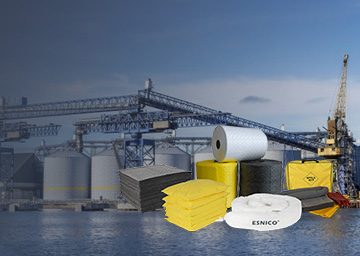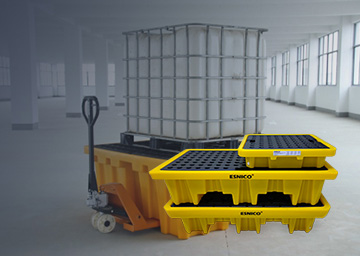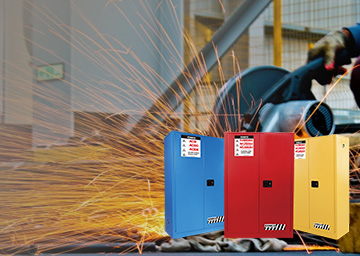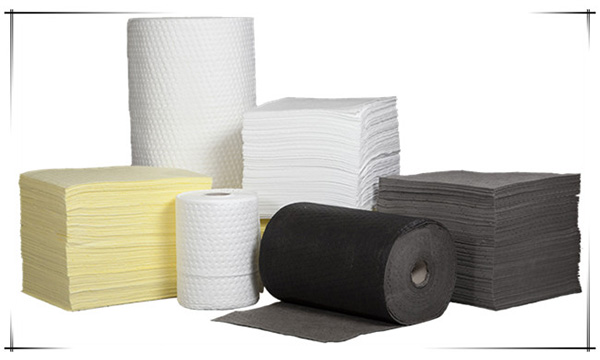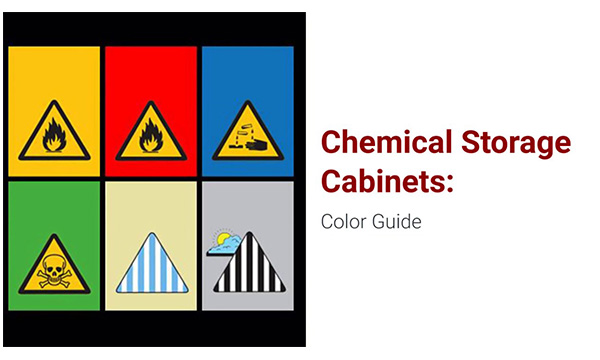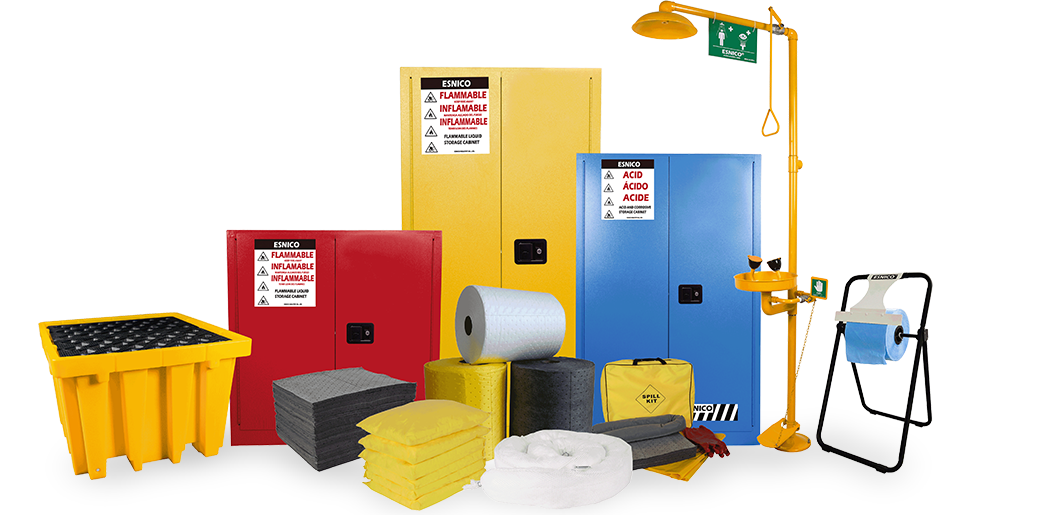When selecting a containment system for an application, many issues need to be considered. A list of issues and some things to contemplate are listed below.
Is the system chemically compatible with the products being stored?
Containment system sumps are primarily constructed of one or two materials: high-density polyethylene or steel.
Skids usually have material choices for grids or platforms. The choice of material depends on chemical resistance as well as disposability of the product. Examples include:
Wood platforms: Once contaminated, they are disposed of according to local regulations.
Fiberglass grids: Compatible with a wide variety of chemicals, but not suitable for corrosive materials.
Polyethylene grids: Compatible with a wide variety of chemicals including many corrosive materials.
How will the system be monitored and cleaned?
Most units have drains. If they don't, usually a spill cleanup kit will be adequate to clean up the internal sump area of the system.
What volume and weight of the containers will be stored?
According to federal codes, a containment system must have a sufficient capacity to contain 10% of the volume of the containers or the volume of the largest container, whichever is greater. Some states may have more stringent restrictions and you should contact your AHJ for your local requirement.
Containment systems are commonly rated with a static weight capacity. This is a weight in a stationary mode.
How often will the containment system be moved? How will it be moved?
Portable containment units are intended to be moved without containers on them. This is the safest mode of transport. The containers can be replaced once the containment system has reached its destination.
Most portable containment systems are constructed with fork pockets. These are designed to accept and be moved by forklifts or pallet jacks.
How will the containers be loaded onto the system?
Ramps that accommodate containment systems are the easiest way to load a system. Low-profile containment systems have also been developed to address the loading issues.
How many containers will be loaded on the system?
Portable containment systems range from accommodating four 5-gallon pails to one 55-gallon drum to whole-room containment systems for drums. Make sure when dealing with flammable products and the larger containment systems that your local fire codes are met. There are restrictions for quantities of flammable products that can be stored in one area depending on the class of the flammable product.
Are any of the products being stored considered flammable?
Special provisions need to be taken into accounts, such as grounding and bonding and the number of flammable products being stored in one area. Check your local codes for these specifications.
What are the state and local codes for secondary containment in your area?
A listing of the regional EPA offices can be found on EPA website. Phone numbers of divisions that deal with secondary containment are listed. The regional office can refer to state EPA agencies that can explain state codes. Another source for secondary containment requirements is your AHJ.
Frequently Asked Questions
Q: What are the free liquids?
A: Free liquids are liquids that readily separate from the solid portion of a waste under ambient temperature and pressure.
Q: What does "10% of the volume of the containers, or the volume of the largest container, whichever is greater" mean?
A: As an example, consider storing four 55-gallon drums:
Four drums x 55 gallons per drum = 220 gallons
10% of all = 10% of 220 gallons = 22 gallons
OR
The volume of the largest container = 55 gallons
In this case, you would need 55 gallons of containment capacity.


